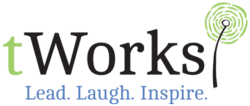Did you know that October is #DisabilityEmploymentAwareness month. When 22% of
Canadians have disabilities- both physical and intellectual- we need to take notice. Of those 22%
of existing disabilities, 80% are invisible disabilities.
Here are three inclusive hiring practices that employers can implement and the benefits that
come.
First, when employers offer accommodations during interviews ie. a keyboard for skills
assessment vs pen and paper; more time to answer questions we are saying….you belong here.
When the accommodation is simply offered then we feel safe enough to disclose who we
authentically are.
Two, when writing job descriptions stick to plain language versus jargon. As well, ensure those
job descriptions are reader- friendly as many individuals have visual challenges. Be aware of the
language used. Is manual dexterity truly needed? Should someone be able to operate a vehicle?
Lastly, increase the talent pool by partnering with an organization that assists individuals with
disabilities. There are some great organizations that obtain government funding for
accommodations. Accommodations can cost a company as little as $500 yet studies show that
employees with disabilities have higher retention rates and loyalty to their employers. Research
what organizations are available in your city to see if you can increase the diverse talent pool of
candidates available to you.
It might be easy to stereotype or judge someone for appearing different than you. For example, I
recently met a young man wearing dark shades inside. He appeared ‘too cool for school’. Yet he
has Irlen syndrome- a perceptual processing disorder that affects the brain’s ability to process
visual information. He was so charming from the start- polite, engaged, and welcoming. When
he found employment he said, “it feels great to feel wanted. I couldn’t help but wonder….who
would not want this man?
When Rachel Twaddle was in Grade 6 she was reading at a Grade 1 level. She remembers her
teachers saying what a sweet girl she was. Blonde, blue- eyed and always smiling she was eager
to help fellow students in class. She had a reputation of being sweet yet slow. It was implied that
she would certainly be okay due to her nature but never successful. Messages she heard so often
by those she trusted the most she believed what she heard. By Grade 5 she determined she was,
indeed, an idiot- Rachel’s word.
Rachel was later diagnosed with dyslexia. Dyslexia is a learning disorder involving difficulty
reading. She eventually went to a specialized school and had an individualized program plan
(IPP).
Rachel is in her fourth week of first year nursing- her dream occupation. She still has an IPP
which allows her to take exams using a keyboard rather than pen to paper.
When 22% of North America’s population has disabilities, both physical and intellectual, should
this population be discounted and discriminated against or can employers recognize untapped
potential and even access resources to eliminate systemic barriers to successful employment?
Understanding differences of needs in schools and workplaces ensures everyone feels like they
belong. Interrupt the messaging to embrace, encourage and empower the potential.
Many with disabilities, particularly invisible disabilities, do not disclose those disabilities in fear
of discrimination. They worry they won’t be hired if someone in hiring discovers they have a
disability.
Many companies recognize the importance of diversity, equity and inclusion yet often focus on
gender, race and ethnicity. Hiring those with disabilities isn’t just about being socially conscious.
It can be a competitive advantage for many firms. According to a recent article by Luisa
Alemany and Freek Vermeulen in the Harvard Business Review, hiring employees with
disabilities can be advantageous in four ways:
- Disabilities often bestow unique talents and perspectives that make people better at certain jobs.
- The presence of those with disabilities elevates the positive culture of organizations.
- Being more inclusive enhances reputation amongst internal and external stakeholders.
- When talent is difficult to acquire being recognized as socially conscious and responsible offers a competitive advantage when seeking human capital.
Interestingly, when HR professionals were surveyed about the psychological safety of their
organizations, 65% indicated that psychological safety was higher within firms that intentionally
hired employees with disabilities. One HR professional interviewed said, “ever since a person
with an intellectual disability started working in the company, all of us have behaved in a more
humane way.”
According to an article by Thomas Aichner, employees with disabilities are more motivated to
work in a meaningful way. Part of this is because of the discrimination behind hiring practices-
that it is so difficult to obtain a job that those with disabilities are simply more motivated because
they appreciate being employed and are more motivated to perform. Broader research indicates
that those with disabilities have higher job satisfaction therefore, in turn, are more productive,
loyal and have lower absenteeism rates.
There’s a reason that ‘us’ is in the word inclUSion. Being socially conscious is the right thing to
do but it’s also best for business. Because when we say, ‘you belong here’ to one we are actually
saying it to all.

